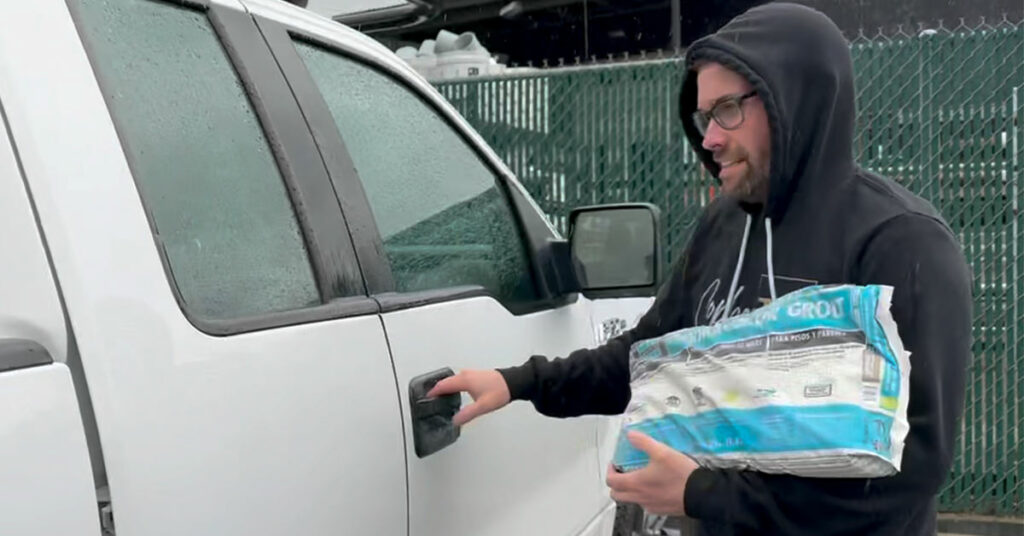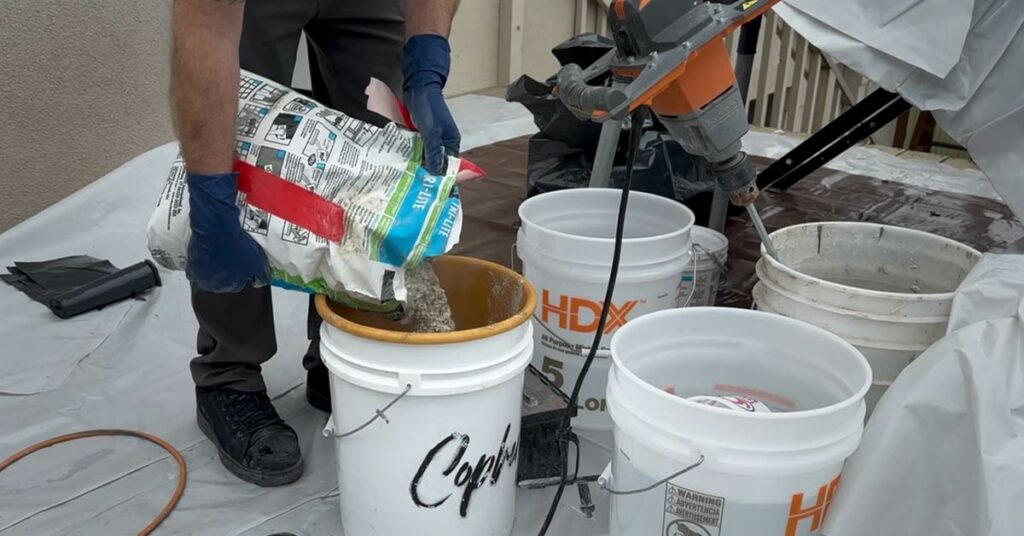
How do tile installation contractors decide what they will charge for labor? There are many factors to consider. One of these factors is material selection. Materials may include tile, setting compounds, and any special tools or equipment necessary to perform the installation. Some homeowners are surprised when they learn how labor costs are determined. Are you comparing bids from reputable contractors? In this article, we take some of the mystery out of how material selection and other factors impact labor costs.
Which materials influence labor costs the most?
For a variety of reasons, low-quality tile tends to be more difficult to work with than high-quality tile. The same concept rings true with setting material. However, there are many exceptions. One would be painting with too broad a brush to say one specific material will always cost less or more to install than another material. The best we can do is to provide some basic information about how some types of materials tend to drive installation costs up or down.
- Mosaic Tile. Mosaic tiles, such as penny rounds and river rock, come in sheets. Installers must spend extra time aligning the materials just right for a successful installation. To be clear, a successful mosaic installation should have a uniform, monolithic appearance. If installers rush through their work, you might see unsightly spaces between the tile sheets. (These are called sheet lines.)
- Natural Stone. Natural stone tiles may require more labor time than glazed ceramic or porcelain tiles. What type of stone do you plan to select? Where will your stone be installed? Depending on the answers to these questions, your tile may need to be sealed before grouting. Is your stone especially porous? If so, numerous applications of sealer may be necessary. The installer must allow some time to pass between applications of sealer. That means some extra drive time will need to be factored into the labor costs.
- Glass Tile. Pieces of glass tile can be the same in number and size as other types of tile yet take twice as long to install. With glass, each cut must be polished prior to setting. This delicate material must be slowly and precisely installed. Otherwise, breaks, chips, and other damage might occur. (Note: Once the material is set, the installation as a whole is not as prone to damage as individual pieces.)

Other Materials and Products
Some materials and products are more labor-intensive to install or use than others.
Setting Compounds
There are many different types of setting compounds, from mastics and mortars to adhesives and thinsets. Each product comes with a unique list of bells and whistles called a Product Data Sheet. Installers use this information to determine which setting compound will maximize labor efficiency and help them achieve the desired outcome. For some projects, the desired outcome can only be achieved with labor-intensive setting compounds. For others, the setting compounds reduce labor time. To illustrate this point, let’s consider thinset mortar. (Thinset mortar is a cement-based tile adhesive.)
An installer might want to use thinset with an “extended open time” for projects involving a large area, because this type of thinset retains its consistency and adhesiveness for a longer period of time. If fewer batches of thinset need to be mixed, less labor will be required to complete the installation.
An installer might want to use thinset with non-slump properties. Gravity pulls on tiles. Installers want to avoid going back and continually readjusting tiles until the thinset is cured enough to stay put. Using thinsets with non-slump properties can help keep tiles in place. This will reduce labor time for vertical installations.
Grout
The grout between tiles helps provide aesthetic appeal to an installation. It also provides some stability. Most grouts will not impact labor costs. The exception is epoxy grout, which is mostly used in commercial applications. This material can be messy to work with and can stain certain types of tiles.
Grout Sealer
Grout sealer is an add-on service.
As a standard practice, we use a high-performance cementitious grout that does not require sealing. These grouts perform as well as a standard cementitious grout does with a coat of sealer. They will accept a coat of sealer if you desire a higher performance, though. To maintain the higher performance, you will need to have your grout regularly resealed.
Adam Copher, Owner of Copher Tile & Stone
Substrate Preparation Materials
The substrate is the surface under the tile. It is just as important to the success of an installation as the tile itself. Substrate preparation materials include backer boards, waterproofing membranes, and underlayment. The labor costs to install these materials will depend on how much time and effort is required.
For example, if you are having natural stone tile installed, the substrate prep will take a little longer. The approved method for substrate prep for natural stone tiles is to use two layers of plywood compared to one layer for ceramic tiles.
Another example is waterproofing membranes. Installing a waterproof membrane on the floor of a rectangular room will be relatively simple and fast compared to a shower with a complex shape, a bench, and niches.
There are many other examples.
Wet Saw Blades
Clean and precise tile cuts require the appropriate wet saw blade, and for some projects, specialized blades. Cheaper, lower-quality blades may slow down the cutting process and extend labor time.
Material selection is one factor among many.
Many variables can impact the rates contractors set for tile installation labor. Some of them have little or nothing to do with material selection. Here are some examples.
- Cost of living. The cost of living can influence labor costs more in one region than another. Installers must be able to afford the necessities of life in the market areas where they work and reside or be compensated for travel time and costs if they live outside the service area.
- Design. A simple tile design will cost less than a complex design, which requires more time and effort.
- Warranties. Some warranties cover labor costs. Others do not.
“Warranties are a huge cost consideration if you have to pay for labor twice.”
Matt Welner, National Tile Contractor Association (NTCA) Trainer
- The level of physical strain. In the tile industry, the human body should be considered a depreciable asset. Let’s explore this idea further.
The Human Body
A business owner cannot count on using the same truck or set of tools for the lifetime of the business. The human body has its limits, too. A business owner cannot expect employees to be able to perform taxing physical labor indefinitely.
If a project is on the ground level of a home and the installer needs to carry in a few foam boards, very little strain will be involved. But if the project is on the third floor and requires several eighty-pound bags of thick-bed mortar, this poses a more significant challenge.
Matt Welner, NTCA Trainer
Materials that increase strain on knees, shoulders, and other parts should increase labor costs. The increase can be used to offset associated healthcare costs. Many seasoned tile installers need to get steroid shots or surgeries. In some cases, they have to retire early or find industry-related careers that are not physically demanding.
Reputable contractors charge enough to adequately compensate their employees and keep the business profitable enough to stay afloat long-term. Companies that underbid on labor costs simply cannot remain in business long-term unless they cut corners to save time. Accurately pricing labor costs and delivering high-quality installations is beneficial for both homeowners and installers, as well as the local economy.
Copher Tile & Stone proudly stays up to date on materials and other factors that impact labor costs with ongoing education with Mapei Technical Institute, Ardex Academy, the National Tile Contractors Association, Laticrete, and Schluter. Copher is a Certified Tile Installer (#1644).
by Alice Dean

